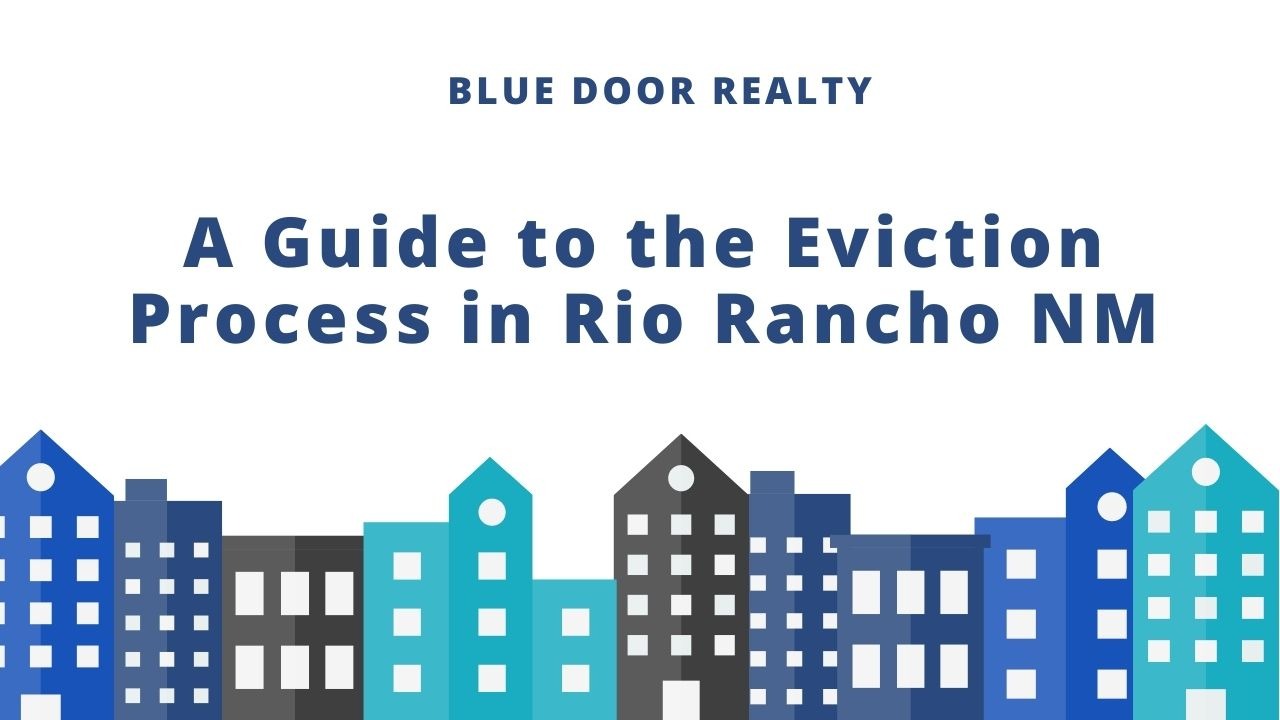As a landlord in New Mexico, you don’t ever want to evict a tenant. The process of an eviction lawsuit can be stressful, and time-consuming. Also, having to re-lease your rental unit is usually difficult and costly. That said, sometimes evicting a tenant is necessary, for example, if a tenant violates the lease agreement by failing to pay rent or failing to follow the rules outlined in the agreement.
If a tenant fails to abide by the lease agreement and the landlord must evict their tenant, they need to follow a specific legal eviction process. In New Mexico, the eviction laws are contained in the Uniform Owner-Resident Relations Act.
In this post, we are providing an overview of the eviction process in New Mexico and New Mexico eviction laws.
1. New Mexico Eviction Notice
To begin the New Mexico eviction process as a landlord, you must first terminate the tenancy in the rental unit. As the landlord, you can only start the eviction lawsuit by serving the tenant with eviction notices. The type of written notice you serve depends on the reason for the expulsion.
Under the New Mexico law, legal reasons for tenant removal for a landlord include:
- Failure by a tenant to pay rent
- Substantial violation of the lease agreement
- Failure by a tenant to move out after the date that the rental or lease agreement expires
- Violation of the health, safety and housing rules and codes
- Illegal activity
Once a landlord has a legal reason for the eviction process in New Mexico, they must then serve the tenant with the appropriate notice.

The notice depends on the reason:
Nonpayment of Rent
For nonpayment of rent, as a landlord, you must serve a tenant with a 3-Day Notice to Pay to begin the process. The written notice will give the tenant the option to either pay the due rent or to move out. If the notice expires without the tenant paying rent or moving out, as the landlord, you can move to court and file a summons and complaint due to nonpayment of rent.
Curable Lease Violations
For a curable lease violation, as a landlord, you must serve the tenant with a 7-Day Notice to Comply. This will give a tenant exactly seven days to either correct the issue or move out. Lease violation that fall under this category include having an unauthorized pet and exceeding the rental property limit.
It is important to note that if the tenant commits the same lease violations within 6 months after the first one, as a landlord, you won’t be required to give the tenant an opportunity to fix the violation. As a landlord, you can move directly to court and commence the eviction lawsuit by filing for a summons and complaint.
Illegal Activities
For illegal activities, a landlord must serve the tenant a 3-Day notice to Quit. In New Mexico, illegal activity includes sexual assault, theft, unlawful use of a deadly weapon, and intentional rental property damage exceeding $1,000.

Habitability Violations
For habitability violations, a landlord must serve the tenants with a 7-Day Notice to Comply. This will give your tenant 7 days to correct the issue impacting a health, building, safety or housing code, or else vacate the rental unit. Examples of material health and safety violations include damage to the electrical wiring, providing harbor for bugs or rodents, or letting trash pile up inside the unit.
If the tenant commits the same violation within a 6-month period, as the landlord, you should serve the tenant with a 7-Day notice. If the tenant remains in the unit after the notice period expires, you can proceed to evict the tenant.
Holdover Tenants
For tenants that ‘hold over’, you must still provide them notice prior to beginning the New Mexico eviction process timeline. The amount of Notice to Quit period depends on the type of tenancy in operation.
If your tenants are on a weekly agreement, you will have to serve them a 7-Day notice prior to moving to court.
If your tenants are on a monthly rental agreement, you’ll have to serve them a 30-Day notice.
If your tenants are on a yearly lease or rental agreement, you must provide them with a 6-month notice.
2. Summons & Petition
The next step is to file a petition for restitution in the appropriate District or Magistrate Court. This costs $132 to file in Bernalillo County.

The District Court can serve the renter for eviction by using any of the following methods:
- Give a copy to the tenant in person.
- Leave a copy where the tenant is currently found.
- Mail a copy to the tenant’s last known address.
- Leave a copy with someone of at least 15 years who shares residency with the tenant.
- Leave a copy with the tenant’s employer if all the aforementioned methods fail.
The summons and petition must be served to the tenant anywhere between 7 and 10 days prior to their removal.
3. Court Hearing & Judgment
In New Mexico, tenants aren’t required to file a formal answer with the court as a condition to appear at the eviction hearing, but they can choose to do so anyway. Both the landlord and the tenant have the right to New Mexico legal aid.
If the tenant doesn’t show up for the hearing, the judge will issue a default judgment in your favor.
However, if the tenant chooses to answer, then they may state any of the following in their defense to the judge:
- You tried to evict the tenant through ‘self-help’ means, such as by shutting down utilities, removing their belongings, or locking the tenant out.
- The eviction was retaliatory after the tenant reported you to the relevant government agency for habitability issues.
- The eviction was discriminatory. Protected classes in New Mexico include sex, ancestry, color, national origin, age, race, childbirth, disability, and gender identity.
- The eviction wasn’t procedural. For a tenant removal to be successful, landlords must follow the proper eviction procedure as outlined in the law. Serving an improper written notice, for example, would deem the eviction in New Mexico unlawful and you may need to do it all over again.
If the judge’s ruling is in your favor, the court will issue you with a writ of restitution. But whichever way the ruling goes, either party may file an appeal.

4. Writ of Restitution
This is the tenant’s final notice to leave. It gives them an opportunity to move out before being forcefully evicted by a law enforcement officer.
After the writ of restitution is issued, the sheriff will have anywhere between 3 and 7 days to evict the tenant.
If the tenant leaves some of their belongings behind, you’ll be responsible for storing them for 30 days. If the tenant doesn’t claim their belongings within this timeframe after notifying them, you can go ahead and dispose it.
Bottom Line
In order for a tenant eviction to be successful in New Mexico, a landlord must follow the New Mexico eviction rules and the New Mexico’s landlord-tenant laws.
This means following these 4 steps:
- Eviction notice
- Summons & Petitions
- Court Hearing & Judgement
- Writ of Restitution
If you have more questions, feel free to contact your Rio Rancho property management company today. Are you wondering about landlord-tenant laws in New Mexico? Read our post here.
Disclaimer: This blog isn’t a substitute for legal advice from a licensed attorney. Laws change and this information may not be updated at the time you read it. For specific questions regarding this content or for help regarding any aspect of your property management needs, Blue Door Realty can help.

